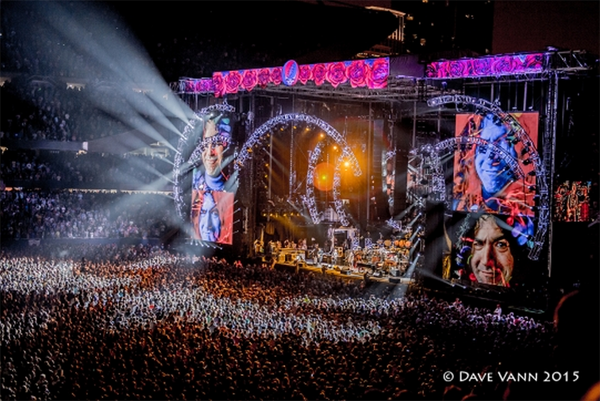
The last time legendary lighting designer Candace Brightman was at Port Chester, NY’s Capitol Theater was around 1970. On December 26th Candace will return to light the theater for the annual Jerry Dance Party to share her signature style which has accompanied some of the most famous rock & roll acts in history, from Janis Joplin to Joe Cocker, Van Morrison and of course the Grateful Dead. Candace began her career in her mid twenties working at the Anderson Theater in New York City and alongside Bill Graham at the famous Fillmore East. Brightman traveled back to the mainland this past summer and out of retirement after eight years (she resides in a pretty remote part of Hawaii now), to light the Fare Thee Well shows in Santa Clara and Chicago. Candace has been the head lighting designer of the Grateful Dead for more than 40 years since being hired by Jerry Garcia, so it only seems fitting to have her back at the Cap.
What first drew you to lighting for the music business?
Well I needed a job, and I was studying set design because initially I wanted to be a set designer. When I first got to New York I started working at the Anderson Theater, I went into the Anderson looking for a job at the box office and they said all of the jobs were taken but that I could check out backstage. I think it had something to do with the fact that I was young and wearing a mini skirt [laughs] so I went in, told them that I was interested in lighting because I had done a little lighting, and they told me to come back on Friday to show me the ropes. I came back and the man who was supposed to help me never showed. The house was open and there was a band playing that night called Pearls Before Swine; there was a tiny lighting system and an old fashion dimmer switch that was so old you wouldn’t believe it. Nothing was marked, so when the band started playing I hit what I thought was a dimmer but it was actually a circuit breaker. The whole stage just blasted red on a bump cue and people came running over to me and said “Wow, that was great!” I began to figure out what was where on the system and I thought, there’s nothing to this. I was making $2.50 an hour because I was told to never work for less than that. (Laughs)
How old would you say you were when this all began?
I was maybe 24 years old, and within a few years I was at The Fillmore East and then at the Capitol Theater. I am a lover of the absurd; I adore things that are absurd too much! The first few years I just loved them, there was so much wild stuff happening. Things were pretty colorful in those days.
So How did you first get in touch with then Capitol Theater promoter Howard Stein? What was it like working with him?
It was really fun, and he had a good sense of humor, we got along great. I got the gig while I was working at the Fillmore; it was originally supposed to go to a man I was working alongside named Bruce and he decided he didn’t want to do it and offered me the job. I’m not sure what Howard Stein thought about that initially (laughs) but it all worked out just fine and I am very grateful to Bruce for doing that.
Would you say The Capitol Theater, as opposed to other venues gave you more creative freedom when it came to lighting?
Oh yeah, there was immense freedom. I’m not sure I would have been able to get away with some of the things I did at the Cap while working at the Fillmore. What I used to like to do with The Dead is when their music got really out there and spacey, I would run wheels with mirrors attached to them and use little sparkling lights and everything else would be pitch black. I feel like it was a wonderful thing to do, to be able to go to pitch black and just listen to the music for a minute or two with some sparkling lights. I could do pretty much anything I wanted there and it was very relaxing. I was never nervous going to work there.


No Comments comments associated with this post